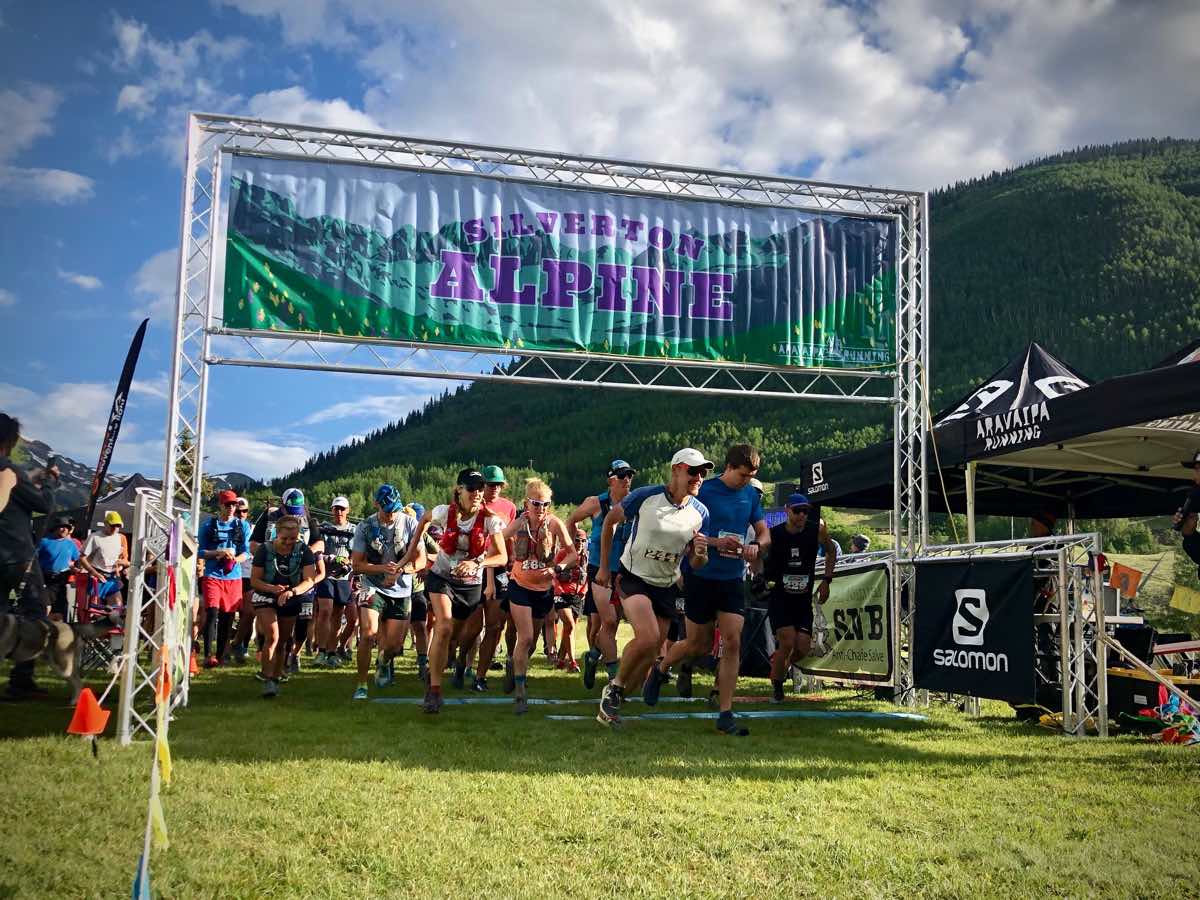
If you enjoy this article, then get your own copy of the book “Where the Road Ends!”
Welcome to this month’s edition of “Where the Road Ends: A Guide to Trail Running,” where we’ll help you prevent chafing while running.
“Where the Road Ends” is the name of both this column and the book Meghan Hicks and Bryon Powell of iRunFar published in 2016. The book “Where the Road Ends: A Guide to Trail Running” is a how-to guide for trail running. We worked with publisher Human Kinetics to develop a book so anyone can get started, stay safe, and feel inspired on the trail.
The book teaches you how to negotiate technical trails, read a map, build your own training plan, understand the basics of what to drink and eat when you run, and so much more. This column aims to do the same by publishing sections from the book, as well as encouraging conversation in the comments section of each article.
In this article, we bring you an excerpt from Chapter 11 to share ideas on how to avoid one of running’s most painful experiences: chafing. Throughout this article series and the book it’s based on, we share the benefits of planning. A little knowledge, a good plan of action, and the right preparation yield positive trail running experiences. Here we hope to help you do exactly that with chafing.
Chafing While Running Needs No Introduction
Really, chafing needs no introduction. Unfortunately, almost every runner experiences it at one time or another.
Chafing refers to the repetitive and exquisitely painful rubbing of your skin against itself, your clothing, or your gear and the skin abrasions that result. Because the human body comes in all shapes and sizes, chafing happens in different places for different people.
Examples from the top down include your shoulders or back against a running pack; your underarms against your inner arms; anywhere a sports bra touches the skin; nipples against a shirt; shorts’ waistbands against your waistline; various genitalia against themselves or your shorts, tights, or liner within your shorts; and your inner thighs against themselves or your running bottoms. Ouch!
But there’s a solution for almost all kinds of chafing. Hurrah! By finding gear that fits correctly, pretaping, lubing areas that are apt to chafe, and reapplying lube when necessary during your run, you can eliminate almost all of your chafing problems. You might find portions of this article a bit forward — sorry about that. The goal here is to get right to the point and prevent a painful skin disaster.
Pretaping means that you cover the portions of your skin that may chafe with tape so that the tape takes the friction, rather than your skin. You’ll need to use a tape that will stick even when you get sweaty and has a smooth outer surface.
Lubing means that you cover your potential chafe points with a substance that will reduce friction. A number of commercial sports lubes out there are oil-based, so you won’t sweat them off for several hours. In a pinch, a petroleum jelly like Vaseline will do the trick, but it tends to wear off more quickly and is more prone to attracting grit. If chafing is a serious issue for you, carry lube on your longer trail runs and reapply as necessary. Don’t run in pain — and shower afterward!
Chafing becomes more common the longer you run. Also, in certain circumstances, chafing is more common, such as in extreme heat and humidity, cold, and rain. Triggers vary by person. Over time, you’ll learn what conditions put you at higher risk for chafing, and you can take preventive action before runs in such conditions.
How to Prevent Chafing While Running
In the rest of this article, we offer ideas for countering the common kinds of chafing runners experience.
Running Pack
Very simply, because your running pack is your most frequent running tool, you need to find a pack that is comfortable for you. Occasionally, something might rub you the wrong way for a short time, but on a regular basis, the pack you run in should feel like part of your body. If that’s not happening, first try to readjust the gear you’re carrying as well as the various adjustment straps. If that doesn’t work after a few attempts, you need to try a different kind of pack.
Underarms
Some people experience chafing of their upper arms against their armpits. You can avoid this by wearing a shirt that places at least one layer of clothing between your chafe points, by pretaping your chafe points, or by lubing as necessary.
Sports Bra
Unfortunately, many folks have serious issues finding a sports bra that fits them like a glove. For some, poor-fitting sports bras can result in chafing in any spot the sports bra touches skin, but it’s most common in the small of the back, on the sternum, where the shoulder straps rest, or under the arms.
Fortunately, an immense diversity of sports bras is available these days. As with a pack, because a sports bra is an essential element of many folks’ running wardrobe, if you’re wearing a sports bra that chafes you, find one that feels good. There’s no need to run like that!
To address sports-bra chafing, pretaping your chafe points works best. Make sure to cut the tape large enough that the edges of the bra and tape don’t overlap and cause the tape to rub off.
Nipples
A super-common chafe point for folks who don’t wear sports bras are the nipples against a shirt. You can completely avoid this problem by slapping a Band-Aid or tape over each nipple. For the fancy, there are nipple covers made specifically for running. It might take a little trial and error to find the nipple protection you need, but find it and let your nipples run in peace.
Waistband
The chafing of a shorts waistband against the waistline is less common, but it can happen, especially when your clothing gets sopping wet. If you know that one small spot of your shorts waistband is apt to chafe against your waistline in certain conditions, pretape your skin accordingly.
Genitals
All kinds of chafing can occur in the genital region, and the issue varies depending on the genitalia, of course. But whoever you are and however it occurs, this sort of chafing is the most miserable. Genitals rubbing against skin or clothing can quickly make your entire life painful. If you chafe anywhere in this region, you’ll need a heavy dose of lube, and you’ll need to reapply it when you feel the friction start to increase again.
The good news is that with adequate lube use you can prevent virtually all genital chafing problems. Use a lube that’s recommended for sports use on the genitals, and use it externally only. That said, if this happens, you should seriously consider finding a new innermost layer for your running.
Inner Thighs
Inner-thigh chafing is the most common kind of chafing in running. It can be a huge problem for those who are prone. Folks who prefer traditional running shorts — those with a liner with a looser overshort — should opt for a skin lube in situations when thigh chafing is likely to occur.
Alternately, runners might opt for some form of running short or tight that extends down to at least midthigh so that the fabric provides a mechanical barrier similar to taping.
Excerpted from “Where the Road Ends: A Guide to Trail Running”, by Meghan Hicks and Bryon Powell. Human Kinetics © 2016.
Call for Comments
Okay, okay, no holds barred in the comments section! Please share the chafing problems you experience as well as what solutions you’ve found for them. The goal here is to help every runner solve their chafing issues.


